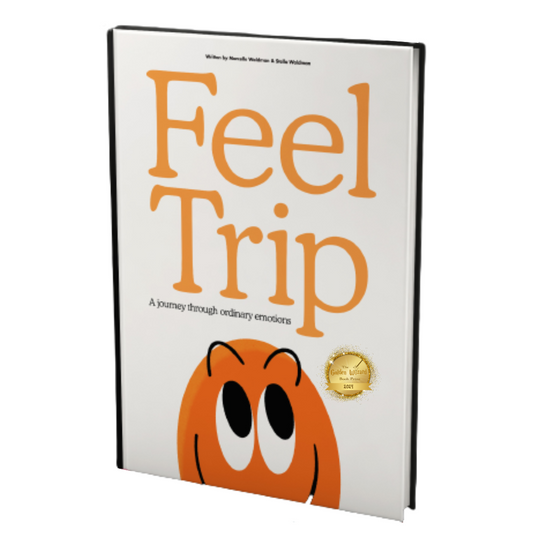How to Nurture Co-Regulation to Build Self-Regulation in Our Children
Share

This is one of my most favorite images by Kristin Wiens - (with a small twist of FeelLinks) - if you do not follow her on Instagram, I highly suggest you go do that right after you read this post!
What is co-regulation, you ask? It is the warm and responsive interactions that a caretaker provides - supporting, coaching and modeling for a child to learn to "understand, express, and modulate their thoughts, feelings and behaviors" (Murray et. al 2015).
Co-regulation skills should be nurtured from birth; supporting a connection, trust and safety between a child and a caring adult (parents, teachers, counselors, etc). It's important to model these foundational skills in order for a child to eventually become less dependent on a caregiver to soothe their overwhelming emotions and begin self-regulation.
Co-regulation does not mean we are rescuing our children from feeling their feelings and "fixing" it all. We want our children to feel all of their feelings - this is the management part in what we do after overwhelming feelings arise. We want to teach children that they can bounce back from a set back, find their calm, and move forward with resiliency.
There are some important actions we can take to support co-regulation and promote a trusting and safe relationship with our children. Remember, every child is born with their own unique temperament, which means children will respond with varying intensity to their environment and interactions with others.
1. Create connection: Your child must feel safe, nurtured and valued to create a strong connection with a trusted adult. Be patient, speak in gentle tones, and show calm affect in your facial expressions (yes, I know, this can be very difficult when our own emotions are running high). Connect by showing affection, read together, play, sing, listen to music, and know their love language 1. “Cuddle me! Chase me!” · 2. “Presents, please!” · 3. “Talk to me!” · 4. “You do it for me!” · 5. “Come here! Look at this!” (The 5 Love Languages of Children by Gary Chapman)
2. Be responsive: When you consistently respond to your child's needs, they will feel that they matter, their feelings matter, and they can trust you. Get down on their level when responding to their needs.
3. Create a safe environment: Create an environment for your child to explore and create - we want our children to encounter patience, comfort and safety when they become scared or confused in their environment.
4. Model: "We will either co-regulate or we will co-dysregulate. They will catch our calm or they will catch our anxiety." -Karen Young
Your ability to exercise your own self-regulation skills when your child is feeling overwhelmed with emotions is vital in their learning how to manage strong feelings. Teach and model the healthy ways you regulate strong emotions so that you are better able to support your child's needs.
5. Reflect: Here are few reflective questions to ask yourself when engaging in co-regulation with your child:
-What could be causing the overwhelming emotions?
-What could I do to reduce the overwhelming emotion?
-How can I engage my child and eventually teach them to do this on their own (eventually self-regulate)?
When we respond to children with patience and compassion, and continuously model healthy strategies, we create a sense of belonging, safety and security. As co-regulation occurs, a child's incredible developing brain, literally creates new pathways and they discover their own capabilities in using self-soothing strategies and eventually learn self-regulation.
Self-regulation is the ultimate goal, and boy, is it a BIG one! The ability for a child to remain calm, cope with overwhelming emotions, adapt and respond appropriately to their environment. These are important life skills that allow children to do well in school (later on in work), at home, and in friendships and relationships.
FeelLinks journal and plush dolls set was intentionally created to support an adult in creating safety, trust and open communication with their child - helping them grow in their emotional intelligence by becoming comfortable with recognizing, understanding, labeling, expressing and regulating their feelings by:
-Opening up trusted and safe communication about all feelings.
-Normalizing all feelings by understanding they are valid and important.
-Building emotional vocabulary for safe self-expression, higher self-awareness and better support from an adult.
-Fostering social-emotional confidence in understanding feelings.
-Supporting exploration of regulation strategies and finding which ones best work for each individual child.
I trust that you are doing your very best to create a space of connection, safety, trust, compassion, patience, value and belonging to grow your child's confidence, self-esteem and resiliency. Your hard ('adulting') work will certainly make for a kinder, calmer, more inclusive world.
With gratitude,
Marcelle





